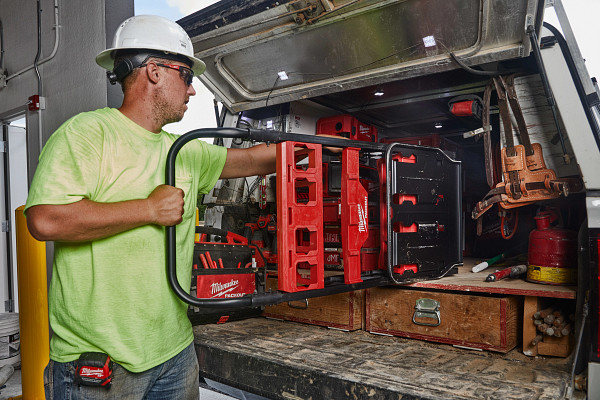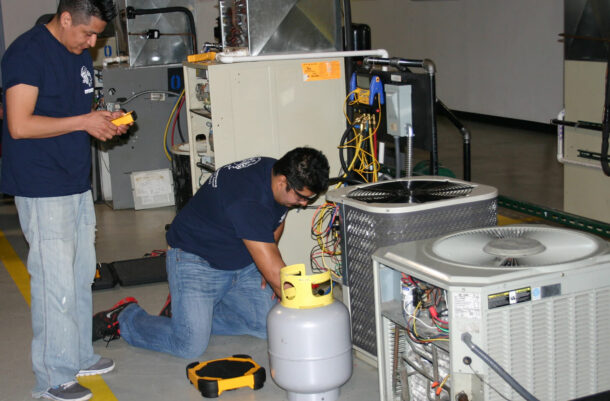Something that every business needs to do as effectively as possible is to save money, and this is often more challenging than it first appears to be. For a construction business, this goal is going to be one of the main ones, and there are actually so many different ways that it can be approached Read more
Whats New

Something that every business needs to do as effectively as possible is to save money, and this is often more challenging than it first appears to be. For a construction business, this goal is going to be one of the main ones, and there are actually so many different ways that it can be approached. If you run a construction company and you are wondering what you can do to save money across the board, there are a few things in particular you might wish to try out.
In this post, we will take you through some of the major money-saving tactics that are definitely worth trying out. As long as you have tried your hand at some of these at least, you’ll find that your company is much more likely to save money and to succeed in general.

Take Care With The Supply Chain
This is always worth looking into, because the kind of partners you have by your side is a really important factor in making sure you are looking after the finances in your business. From time to time, it’s worth taking a look at your supply chain and seeing whether you could do with swapping one or two of those suppliers out. Often, just doing that is going to mean that they are going to cost you a lot less money, so it’s really important that you are thinking about this.
For instance, you might discover that there is a supplier that has been using a tool or providing you with a service you didn’t strictly need, and before you know it you will be in a situation where you are paying out so much more than necessary. All sorts of things like this can happen, so it’s important that you are taking care and checking on all aspects of the supply chain frequently, or as often as you can.
Use The Right Equipment
There are a few ways in which using the right equipment can and will help your construction company to save money. Perhaps the most obvious is that the right equipment is less likely to break and cause issues, meaning that you won’t have to replace it or repair it as often. It is also to do with trying to keep your waste down, which again is going to be easier and simpler to do if you are using the right equipment wherever possible.
To this end, you should regularly check that you are using the best equipment for each job. Everything should be considered here and for every task, from your mining equipment to your diggers and beyond. It’s all about focusing on both the smaller details and the bigger things. If you can do both of those and use the right equipment at every turn, you will find that this makes a huge difference overall.

Hire A Project Manager
Most construction companies will have project managers these days, and it’s really easy to see why once you have hired one yourself. A project manager can help you to keep everything together so much more neatly and effectively, and every project is just going to be so much more effectively run as a result. If you have not yet got a project manager, you should make sure that you find one as a matter of course, because they are going to help you a lot in so many ways.
And as it happens, one of the main results of having a good project manager is that you will be able to save a lot of money. That’s because everything will be run tighter, there will be less waste or unnecessary movements, and everything is going to be so much more fiscally sensible. So make sure you hire a project manager as soon as possible if you don’t already have one. That is one of the best things you can ever do for your construction company.
Renew Contracts
As a construction company, contracts are the lifeblood of your finances. It’s really important to secure them well. But you also need to make sure you renew them, because each time you do, you have the opportunity to improve the terms for you financially. It is at least imperative that contracts are revisited annually, because inflation, the economy and other matters will affect how the contract plays out and what you can actually expect from it. So you should make sure you are doing that automatically.
But more than that, you might want to work on how you actually renew contracts, placing a particular focus on arguing your case for better terms for yourself and your business. And it can often help here to have someone who is used to doing this, who may be someone in your business or someone you hire specifically for the job. In fact, having an accounts manager is a very good idea indeed.
That way, your contract renewals are likely to be financially much better for you, leading to greater financial security overall. That is very important to have, so it’s a good idea to think about this.
Go Wholesale
On everything that you can, you should always choose wholesale over retail costs. In other words, whenever you know that you will need to buy a certain amount of anything, you are going to be better off if you have chosen to acquire that wholesale rather than at retail price. It’s amazing what a difference it can make over time, even if the unit price doesn’t seem that different at first.
This is one of those very simple yet powerful things that you should absolutely make sure you are thinking about. It could make a huge difference to your business.
If you do those things, your construction company is going to save a lot of money and generally be in a much better place overall.

Your HVAC system is essential for keeping a comfortable indoor climate. But even the best-maintained systems might experience typical problems that impair their performance. We’ll examine the most frequent HVAC issues in this article, including the causes and fixes for each. Understanding these issues will empower you to take proactive measures to ensure that your Read more
Your HVAC system is essential for keeping a comfortable indoor climate. But even the best-maintained systems might experience typical problems that impair their performance. We’ll examine the most frequent HVAC issues in this article, including the causes and fixes for each. Understanding these issues will empower you to take proactive measures to ensure that your heating, ventilation, and air conditioning system functions optimally, year-round.
Inadequate Airflow
Inadequate airflow is a frequent HVAC issue. When your air filters become clogged with dust and debris, it obstructs the smooth circulation of air throughout your HVAC system. As a result, your system’s efficiency is compromised, leading to uneven heating or cooling in your living or working space. Regularly replacing your air filters and ensuring that vents remain unobstructed can effectively address this problem. Proper maintenance and upkeep are key to preventing inadequate airflow, optimizing your HVAC system’s performance, and maintaining a consistently comfortable indoor environment. Additionally, neglecting airflow issues can put unnecessary strain on your HVAC system, potentially leading to higher energy bills and costly repairs. A well-maintained system not only helps you save money, but it also creates a healthier and more welcoming interior environment for you, your family, or your coworkers.
Leaks of Refrigerants
HVAC systems frequently experience refrigerant leaks, which have a negative impact on their operation. When refrigerant levels become insufficient due to leaks, the system is forced to work harder, resulting in increased energy consumption and reduced cooling or heating efficiency. Recognizing signs such as a decreased cooling or heating capacity and hissing sounds is crucial for identifying this problem. It’s crucial to get expert help to quickly identify and fix refrigerant leaks. Addressing this issue not only ensures optimal HVAC performance but also prevents environmental harm, as refrigerants can be harmful if released into the atmosphere. Moreover, refrigerant leaks can lead to higher operating costs and potentially shorten the lifespan of your HVAC system, making timely repairs even more essential. Neglecting this issue may ultimately result in more extensive and costly damage to your HVAC equipment.

Thermostat Problems
Thermostat problems can disrupt the functionality of your HVAC system and affect the comfort of your indoor environment. When your thermostat malfunctions, whether it’s unresponsive to your settings or exhibits erratic behavior, it can lead to temperature inconsistencies. In Texas, for example, temperature variations can be notable. Therefore, if you have an HVAC in Amarillo, ensuring your thermostat is correctly installed and functioning optimally is particularly crucial for maintaining a comfortable indoor climate throughout the year. Seeking professional assistance to calibrate or replace a faulty thermostat is advisable to address this issue effectively. Additionally, routine maintenance can increase the lifespan of your HVAC system and reduce your energy costs. Effective temperature control relies on properly calibrated thermostats, which keep your house cozy in the winter and cool in the summer.
Electrical Control Issues
Electrical control issues in HVAC systems can lead to disruptions in performance and, in some cases, even complete system failure. These issues often stem from problems like corroded wires, malfunctioning capacitors, or other electrical components that have become worn out over time. It’s essential to take care of electrical control problems if you want to keep your HVAC system functioning properly and for a long time. Regular maintenance and timely repairs conducted by qualified technicians can help prevent these glitches, ensuring that your system operates reliably and consistently, delivering the comfort you expect in your indoor space.
Ignition or Pilot Issues
Ignition or pilot issues are common culprits for heating problems in HVAC systems, particularly in furnaces. When your furnace fails to ignite or frequently goes out, it’s often indicative of malfunctioning ignition components or a dirty pilot light. Ignoring these issues can lead to discomfort, especially during colder months. To ensure a consistently warm and comfortable home, it is essential to promptly address ignition and pilot problems. Professional assistance can diagnose the root causes and provide the following:
- Necessary repairs.
- Ensuring that your HVAC system operates reliably and efficiently.
- Delivering the warmth you need in your living or working space.
Conclusion
Whether it’s ensuring proper airflow, addressing refrigerant leaks, calibrating your thermostat, tackling electrical control problems, or promptly resolving ignition and pilot issues, these proactive measures can save you from discomfort and potentially costly repairs. Your HVAC system will work more efficiently all year long with routine maintenance and expert help as necessary. No matter the season, you can have dependable heating and cooling if you remain aware and take action.

What is easier: to purchase an existing business or to start from scratch? Truth be told. turning any business into a success can be a tough and difficult journey that requires expert guidance. You might find that buying an existing venture can save you a lot of setup time. However, when considering a business acquisition Read more
What is easier: to purchase an existing business or to start from scratch?
Truth be told. turning any business into a success can be a tough and difficult journey that requires expert guidance. You might find that buying an existing venture can save you a lot of setup time.
However, when considering a business acquisition, you certainly want to work closely with expert business advisors who can share their understanding of the industry and provide valuable insights.
The main reason why a business is available for purchase is because it isn’t valuable from the current owner’s perspective. This doesn’t mean that the business is necessarily failing. But it may require solid investments to get up to speed with its current market, or it may struggle with forward-thinking workplace arrangements in a post-pandemic world. Alternatively, sometimes a business owner doesn’t have any suitable successor and prefers selling. Regardless of their reasoning, you will need to implement smart strategies to bring your newly acquired business to the next level.

#1. Invest in the equipment you need
One of the first steps to turn your acquisition into a success is to invest in advanced equipment. Whether you are in construction, manufacturing, or any other trade, advanced machinery and equipment are essential to staying competitive. Upgrading your tools will not only enhance productivity, but it will also ensure that you can meet the evolving demands of the market.
Ultimately, the right equipment can make your operations run smoothly, more efficiently, and more cost-effectively, which are key objectives for a business acquisition.
#2. Make cybersecurity a priority
It makes no doubt that cybersecurity is paramount for business growth and risk prevention in an M&A. A breach can have catastrophic consequences, leading to data loss, financial damage, and even a loss of trust among existing clients.
Besides, it is important to consider some commonly overlooked cybersecurity issues in mergers. For instance, tech disruptions between the companies and dormant threats from pre-existing vulnerabilities can dramatically affect the success of your acquisition.
#3. Modernize the workplace model
Welcome to a post-pandemic landscape that has reshaped work dynamics. Nowadays, businesses need to embrace flexible and remote policies to stay relevant, not only as market players but also as employers.
It can be tough to implement these changes, especially in a long-established business environment. However, these are necessary to attract and retain talent in your acquisition. Flexible workplaces and remote work models can effectively reduce operational costs, which will be a major factor of success post M&A. Organizational and operational costs tend to increase after an acquisition, which can make it challenging to invest in the future success and growth of the business. As such, modern workplace settings can contribute to building a more efficient and resilient structure in today’s market.
#4. Authenticity
Authenticity is a valuable asset in the business world. Being genuine in your communication and actions can significantly boost the reputation of your acquired business. As such, you want to make it your mission to connect with existing customers and employees on a personal level, showing them that you care about their needs and concerns.
Turning a bought business into a success is never a straightforward task, but it isn’t an impossible endeavor with the right strategy and approach. That being said, if you are considering a business acquisition, you certainly will need to prepare ahead for the financial and organizational rollercoaster that will ensue. Being prepared will give you the opportunity to build for success rather than survival.

When the silence of a smoothly running HVAC pump is replaced by an unsettling hum, it’s not just an annoyance; it’s a call to action. An HVAC pump, the heart of your heating and cooling system, requires more than a glance and a nod. It demands vigilant care and precise maintenance. While most see it Read more
When the silence of a smoothly running HVAC pump is replaced by an unsettling hum, it’s not just an annoyance; it’s a call to action. An HVAC pump, the heart of your heating and cooling system, requires more than a glance and a nod. It demands vigilant care and precise maintenance.
While most see it as just another component in their HVAC system, the savvy homeowner recognizes it as the pivot upon which comfort and cost-efficiency balance. This article is an arsenal of expert advice poised to equip you with the know-how to keep that critical equipment in prime condition.
Here, you’ll learn not just to respond to HVAC pump problems, but to prevent them and ensure that a broken HVAC pump is a scenario you’ll rarely, if ever, face.

-
Regular Inspection Schedules
To keep your HVAC pump running without a hitch, set up a regular inspection schedule. It’s as vital as taking your car for check-ups.
Start by marking your calendar for a bi-annual inspection. When you peek inside the workings of your HVAC system during these check-ins, you’re looking for any signs that things aren’t as they should be.
Look out for leaks, listen for strange noises, and feel for excessive vibration. Catching these early signs of wear can mean the difference between a quick fix and a full-blown repair job.
-
Keep It Clean
Dirt and debris are the nemeses of any HVAC system. Ensuring your HVAC pump and its surroundings stay clean isn’t just about aesthetics. It’s about performance and longevity.
A clean pump doesn’t have to work as hard, which means it uses less energy and is less likely to give up on you when you need it most. Make it a routine to clear away leaves, dust, and anything else that doesn’t belong. This simple act of HVAC care keeps your system breathing easy and your home comfortably warm or cool, depending on the season.
-
Lubricate Bearings Properly
Think of lubricating the pump’s bearings as oiling the wheels of your bicycle. It makes for a smoother ride. Your HVAC pump needs this kind of attention to run without friction.
Without proper lubrication, bearings can wear out faster and lead to HVAC pump problems down the line. Use the manufacturer-recommended lubricant and follow their guidelines for how often to apply it. This small, easy step can prevent a world of hassle and ensure your pump stays in tip-top shape.
-
Monitor HVAC Pump Seals
The seals on your HVAC pump are the unsung heroes, keeping everything contained and running smoothly. But when they start to go, you could be looking at leaks, and nobody wants that.
Regularly checking these seals can save you from the trouble of water damage or a broken HVAC pump. If you spot moisture or drips, it’s time to act. Replacing a seal is much cheaper than replacing a pump, so keep a watchful eye on these critical components.
-
Check Alignment
When the alignment between your HVAC pump and the motor strays off course, it’s like driving a car that’s veering to one side; you’re heading for trouble. Misalignment can cause undue strain on your system and lead to wear and tear that could end in a breakdown.
Use a straightedge or a laser alignment tool to ensure everything is lined up correctly. This isn’t just about preventing a broken HVAC pump; it’s about keeping your system running efficiently and your energy bills in check.

-
Monitor System Pressure and Flow
Your HVAC pump needs to hit the right notes when it comes to pressure and flow. You want to make sure your pump isn’t working too hard or taking it too easy. If the pressure’s too high or the flow too low, it’s like a warning light on your car’s dashboard: something’s not right.
You can find the ideal pressure and flow levels in the user manual. Keep a regular check on these, and you’ll help your pump perform its best, avoiding any HVAC pump problems before they start.
-
Maintain Drive Belts
Just like the chain on a bike, the drive belts in your HVAC system are what connect the power from the motor to the pump. If they’re too tight, too loose, or worn down, you won’t be going anywhere fast.
Check the tension and look for any cracks or wear. If you spot signs of aging or damage, it’s time for a replacement. Keeping your drive belts in shape means your system runs smoothly, and that helps keep those energy bills from climbing.
-
Verify Electrical Connections
Loose or damaged electrical connections are like loose laces on a sneaker; you could trip up at any moment. A well-running HVAC system relies on solid electrical connections.
Make it a habit to check for any signs of overheating or corrosion. If you’re not sure what to look for, this heating and cooling company can help. A professional can spot issues you might miss and can ensure that everything’s tight and right.
-
Implement a Predictive Maintenance Program
Predictive maintenance is like having a crystal ball for your HVAC system. Instead of waiting for problems to happen, you use tools to predict and stop them in their tracks.
Vibration analysis and thermal imaging can tell you a lot about the health of your HVAC pump. They let you see the unseen, like if parts are getting worn out or if something’s getting too hot. By catching these early signs, you can get ahead of the game.
And when it comes to the types of HVAC pumps, each one has its own signs to watch for. With predictive maintenance, you’re not just fixing. You’re strategizing for a future where emergency repairs are rare and your HVAC system is always at its best.
Optimal Performance Awaits
Your HVAC pump stands sentinel to your comfort, and with these tips, its longevity and efficacy are in your hands. Don’t let the disruption of a broken pump catch you off guard. Arm yourself with the knowledge to maintain, preempt, and when necessary, address the varied types of HVAC pumps with confidence.
And remember, proper HVAC care is not a luxury; it’s a necessity. For those hungry for more wisdom, our blog is a treasure trove of tips. Don’t stop here; let your quest for peak HVAC maintenance continue with us.

Managing the ins and outs of staffing your business is a crucial part of maintaining productivity and producing great results. You need to be able to manage your employees effectively if you want to run your business smoothly and keep your staff happy at the same time. There are always steps you can take to Read more
Managing the ins and outs of staffing your business is a crucial part of maintaining productivity and producing great results. You need to be able to manage your employees effectively if you want to run your business smoothly and keep your staff happy at the same time. There are always steps you can take to make your management of employees better, even if you’re already focusing on good management. It’s not just your managers who need to be good at managing your staff, but also people in HR and other departments. If you want to improve employee management, start with these tips.

Track Employee Hours Smartly
Tracking your employees’ time at work accurately is essential for them and for you. They want to ensure they’re paid for every minute they work, and you want to be sure you’re not overpaying them. The best way to improve your tracking of employee time is to use employee time tracking softwares. It makes it much easier to keep a close watch over clocking in and out, and the exact hours your employees have worked. You’ll also have all of the data you need to make smarter staffing decisions in the future, saving your business money.
Take Responsibility for Staffing Issues
All businesses can struggle with staffing issues. A bug may be going through the office or some employees could be dealing with personal issues. But if you want to manage your employees well, it’s essential to take responsibility for staffing issues. It’s up to the employer to solve any problems and ensure the business is adequately staffed. Don’t leave it up to employees to find someone to replace them if they’re ill or need to take time off. You should have plans in place to keep your business going and avoid being short-staffed as much as possible.
Improve Communication
Communication is key to managing your employees well. Without good communication, it’s difficult to get anything done and you could even find that some significant mistakes are made. The first way you can improve communication is by soliciting feedback from your employees. Ask them about how communication can be made better, including which methods you should use to communicate and what sort of things they want to be kept up to date with. This immediately gives them a chance to have their say and be part of how things can be improved.
Give Employees the Right Tools
It’s difficult for anyone to get their work done if they’re working with inadequate tools. Whether it’s someone working at a desk or cleaning an office, they need the appropriate tools to be efficient and productive. Reviewing the tools and resources your employees have access to can help you identify improvements that could be made and upgrades that you can put in place. Talk to your employees about which tools they feel might help them work more efficiently and be more productive.
With the right strategies, you can manage your employees and their time more effectively. Get your staff involved in how to make positive changes.
